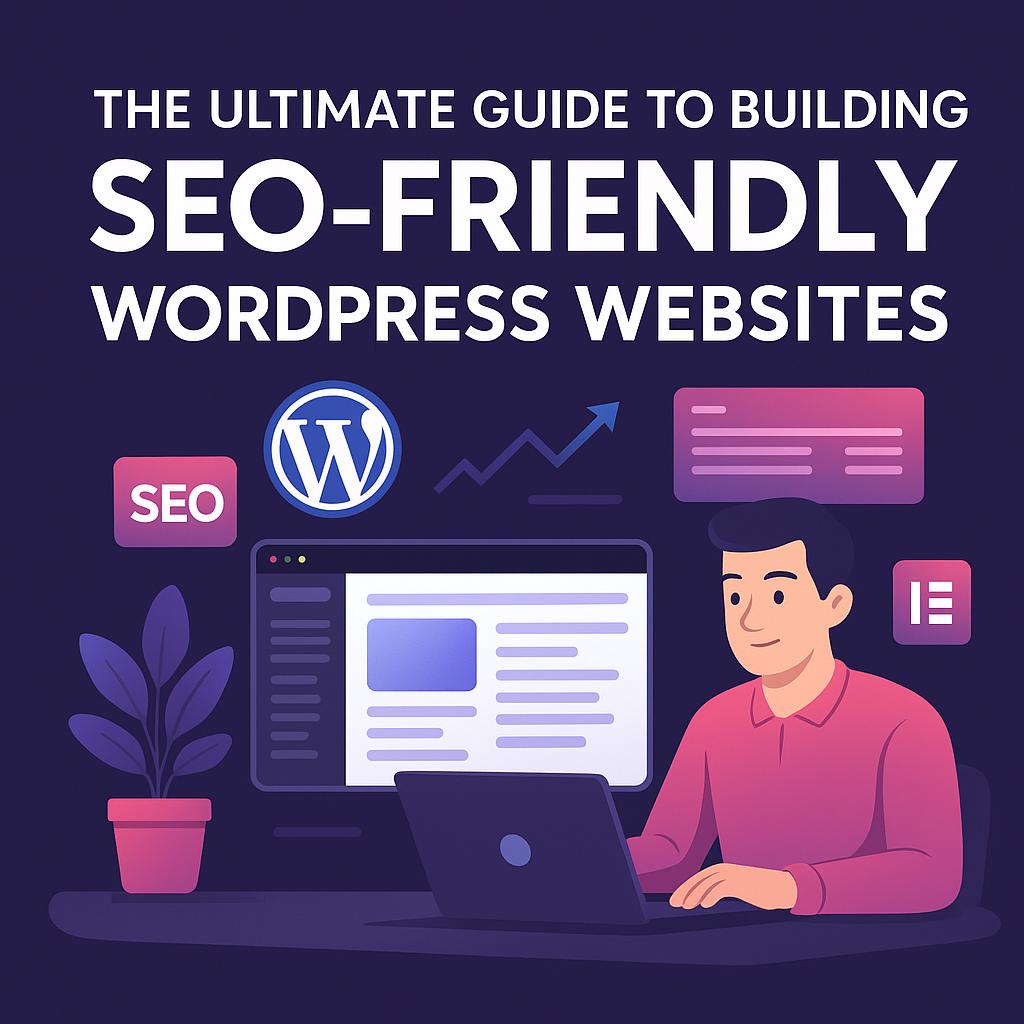If your website doesn’t show up on Google or loads slowly, you’re leaving money on the table. The good news? WordPress + Elementor makes it possible to build a beautiful site that’s also search-friendly—if you follow the right process.
Hi, I’m Fusis Mamun, a WordPress & Elementor Expert with 6+ years of experience and 1500+ projects. In this guide, I’ll show you exactly how I build SEO-friendly WordPress websites for clients—from the technical foundation to content, speed, and conversions—so you can do it too (or hire me to do it faster).
1) Choose the Right Foundation (Hosting, Theme, Plugins)
Fast, reliable hosting
Your server is the basement of your SEO house. Choose a modern, LiteSpeed/NGINX-based host with built-in object caching and HTTP/3 support. Look for:
- SSD/NVMe storage
- Server-level caching (or LiteSpeed Cache support)
- Free SSL + CDN integration
- Staging environments for safe edits
Lightweight theme
Use a lean, well-maintained theme that plays nicely with Elementor, like Hello, Astra, or GeneratePress. Avoid heavy, multipurpose themes that bundle dozens of scripts you’ll never use.
Essential plugins only
Every plugin adds weight. Keep it minimal:
- Cache/Performance: WP Rocket or LiteSpeed Cache
- SEO: Rank Math or Yoast
- Image Optimization: ShortPixel or Imagify
- Security/Backup: Wordfence or iThemes + UpdraftPlus
- Schema (if not using Rank Math): Schema & Structured Data for WP
2) Structure Your Site for Google (and Humans)
Clear information architecture
Plan pages before you design. A simple structure helps users and search engines:
- Home
- Services (separate page for each service)
- Portfolio/Case Studies
- About
- Blog (categories mapped to services)
- Contact
SEO-friendly permalinks
Use /post-name/ structure. Keep slugs short, descriptive, and aligned with your target keyword:
/wordpress-speed-optimization//elementor-landing-page-design/
Create a logical internal link map
- Link down from pillar pages (Services) to supporting blogs.
- Link up from blogs back to the relevant service page.
- Use descriptive anchor text: “WordPress speed optimization” (not “click here”).
3) On-Page SEO That Actually Works
Titles & meta that get clicks
- Put the keyword early in the title.
- Write human-first meta descriptions that promise a benefit or outcome.
- Keep titles under ~60 characters; meta under 160.
Heading hierarchy (H1–H3)
- One H1 per page (your main topic).
- Use H2 for sections, H3 for subsections.
- Naturally include related keywords (don’t stuff).
Image SEO
- Compress images (WebP if possible).
- Use descriptive filenames:
elementor-landing-page-design.webp - Add alt text that describes the image and context.
Content checklist for each page
- Clear problem → solution structure
- Benefits before features
- Proof (results, reviews, logos)
- FAQs (adds long-tail keyword coverage)
- A single, obvious CTA (e.g., “Order on Fiverr”)
4) Speed: Hit Core Web Vitals (Under 2 Seconds)
Caching & minification
- Turn on page + browser caching.
- Minify/Combine CSS & JS (test for conflicts).
- Defer non-critical JS; delay third-party scripts.
Media optimization
- Serve next-gen images (WebP/AVIF).
- Lazy-load images/iframes.
- Use responsive images (
srcset) so mobile gets smaller versions.
Database & fonts
- Clean transients, post revisions, tables monthly.
- Limit font weights; preload the primary font; use
display=swap.
CDN + server tuning
- Use Cloudflare/BunnyCDN for global delivery.
- Enable HTTP/3 and Brotli compression.
Pro tip: After each major change, test with PageSpeed Insights and GTmetrix. Fix what’s flagged, then retest.
5) Schema Markup: Help Google Understand Your Site
Structured data adds context (and can win rich results). Prioritize:
- Organization/Person (name, logo, social links)
- Service (for service pages)
- Breadcrumb (improves SERP display)
- FAQ (for on-page FAQs)
- Article/BlogPosting (for blog posts)
If you use Rank Math, most of this is built-in. Otherwise, add JSON-LD with a schema plugin or custom code.
6) Content Strategy That Attracts Clients (Not Just Traffic)
Map keywords to intent
- Service pages: “WordPress speed optimization service,” “Elementor landing page design.”
- Top-of-funnel blogs: “How to improve WordPress speed,” “Elementor vs Gutenberg.”
- Middle-of-funnel: “WordPress launch checklist,” “Best WooCommerce plugins for beginners.”
- Bottom-of-funnel: Case studies, comparisons, pricing pages.
Write like a problem-solver
- Start with the user’s pain.
- Explain the fix, show the result, invite action.
- Add screenshots, short videos, and before/after metrics.
Update regularly
Refresh older articles every 3–6 months: new screenshots, updated steps, internal links to new posts, and a fresh date.
7) Elementor Best Practices for SEO
- Use containers instead of nested sections where possible (cleaner DOM).
- Avoid heavy animations on first screen.
- Use global colors/typography for consistency and smaller CSS.
- Keep third-party Elementor add-ons to a minimum.
- Add semantic HTML tags (header, main, footer) via Elementor’s layout settings.
8) WooCommerce: Extra Care for SEO & Speed
- Use a performance-friendly theme and avoid heavy add-ons.
- Optimize product images & enable lazy load.
- Add product schema (Rank Math can do this).
- Craft unique product titles, metas, and FAQs.
- Cache carefully (exclude cart/checkout from page cache).
9) Essential Tools to Measure & Improve
- Google Analytics 4 — user behavior & conversions
- Search Console — queries, coverage, Core Web Vitals
- PageSpeed Insights / Lighthouse — performance & PWA checks
- GTmetrix — waterfall view to hunt bottlenecks
- Ahrefs/SEMush/Ubersuggest — keyword research & content gaps
Set monthly reminders to check reports, fix errors, and plan new content.
10) Launch & Ongoing SEO Checklist
- Custom domain + SSL
- Clean permalinks
- Titles, metas, OG tags set
- XML sitemap submitted in Search Console
- Robots.txt allows indexing
- 404 page + redirects configured
- Core Web Vitals: green on mobile
- Schema validated (Rich Results Test)
- Internal links added between pages/blogs
- Contact forms, emails, analytics working
You can absolutely build an SEO-friendly WordPress site yourself with this guide. But if you want faster results with professional polish, I can help you plan, build, and optimize everything—from hosting and design to Core Web Vitals, schema, and conversion.
👉 Order on Fiverr: https://www.fiverr.com/s/e6K0ajk
👉 See my portfolio: https://fusismamun.com
👉 Need a custom quote? Send me a message—I reply fast.

